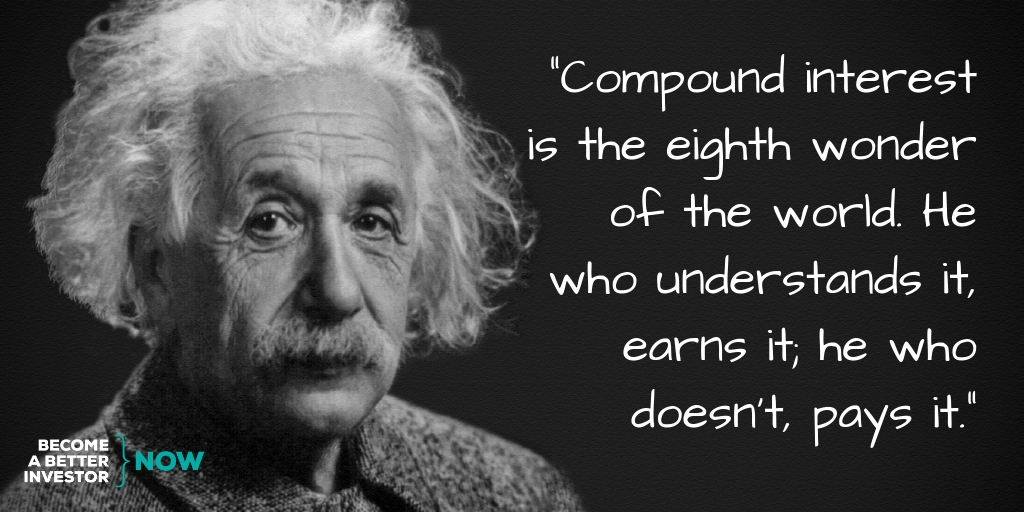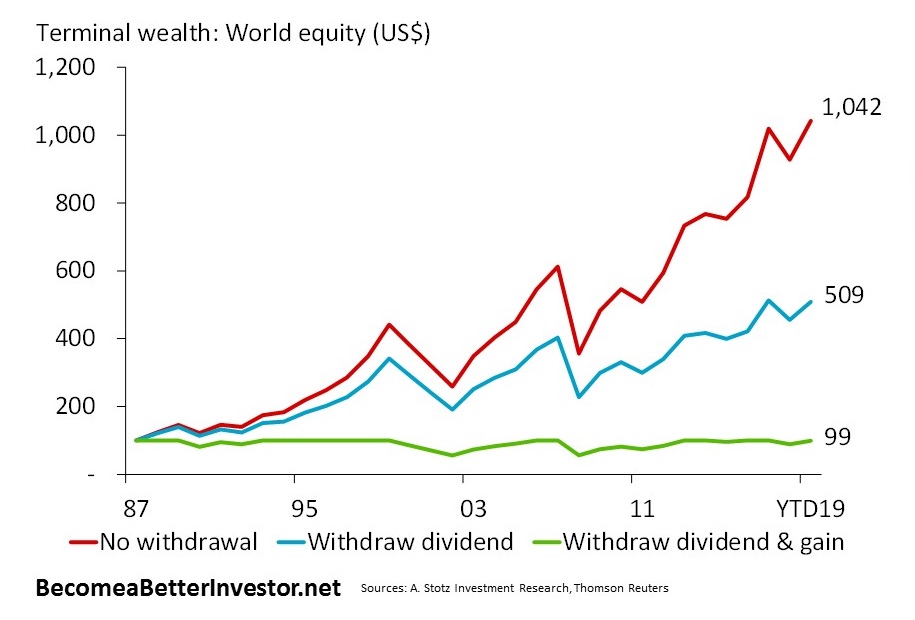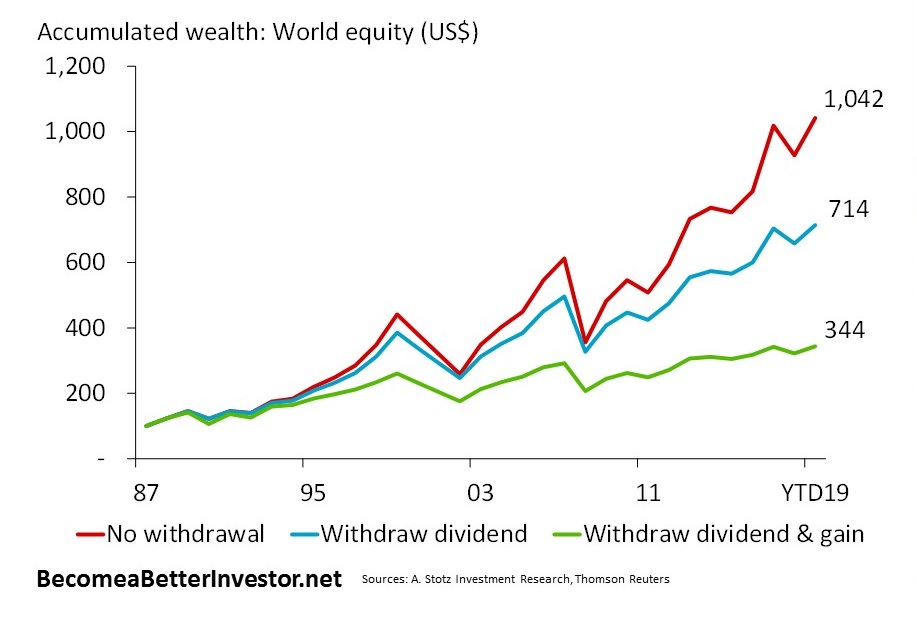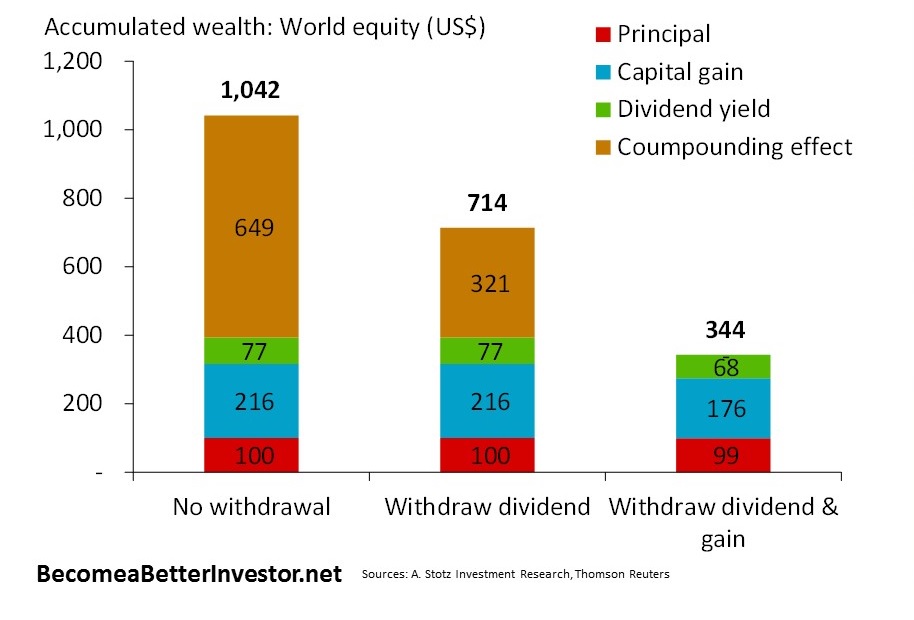Einstein’s Eighth Wonder of the World
Ever heard someone say: “money doesn’t grow on trees”? I’m here to challenge that statement, and my argument is not that most money is made of paper. But rather what Einstein referred to as the eighth wonder of the world. If you want to see what this eighth wonder is up against, check Wikipedia on wonders of the world.
“Compound interest is the eighth wonder of the world. He who understands it, earns it; he who doesn’t, pays it.”
The boring part is that it takes time
Unfortunately, compound interest is quite boring for the first 20 or so years. But compounding is your best friend in investing. Let’s make this more real and look at what compounding actually can do for you and some rules to follow to get the most out of this eighth wonder of the world.
When investing in stocks, your returns come from capital gains, price appreciation of the stock, and dividends, when the company distributes a portion of its earnings to shareholders. By staying invested and reinvest you can also make money from compounding.
Three approaches to the world-equity portfolio
Let’s assume you were to invest $100 in world equity at the end of 1987 and let’s compare three different scenarios. Let’s say you can choose 1) no withdrawal (never withdraw any money, instead, you reinvest all dividends), 2) withdraw dividends only each year, or 3) withdraw dividends & gain each year.
Let’s first look at the terminal wealth of these three options, i.e., the value of your investment portfolio today.
If you stayed invested and reinvested your dividends, your terminal wealth would be $1,042 today. If you didn’t reinvest dividends, you’d have $509 today. As you can see if you withdraw all your capital gains and dividends each year, your terminal wealth would end up being about the same as you put in.
Accumulated wealth accounts for your gains over the whole investment period
Though, in the cases where you take out money from your portfolio in the form of dividends or dividends and capital gains you have made more money than the terminal wealth. We’ve therefore taken a look at something we call accumulated wealth. The measure considers all money that you’ve made throughout the time since you began investing at the end of 1987.
With no withdrawals, the accumulated wealth stays the same as the terminal wealth as nothing has been withdrawn. Without withdrawals and full reinvestment of dividends, your $100 has generated you $942 in total gains. The accumulated wealth for withdrawing only dividends was $614, and if you withdrew capital gains as well, it was reduced to $244.
Compounding is free money
We can break this accumulated wealth into four parts: your principal investment of $100, capital gains, dividends, and compounding.
The main difference between the three different choices is compounding. With no withdrawals, the compounding effect created $649 of the $942 or 69% of the wealth created from your $100 investment. By reinvesting dividends, you gained an additional $328 in compounding compared to if you withdrew all dividends–$649 compared to $321 in compounding effect.
In the third alternative where you withdraw both capital gains and dividend, you gained nothing from the compounding effect. You can also see that the dividend and capital gain parts are smaller. The reason for this is what was mentioned earlier that we assume that you don’t contribute any more money to your portfolio. Since you withdraw all gains at the end of each year, it means that some years your portfolio will have a value less than $100 and those years there are no capital gains for you to withdraw, and the base for your dividends has been decreased as you’ve realized gains.
There is more free money to collect
To benefit the most from the eighth wonder of the world—compounding—you must invest for the long term, and you should reinvest dividends. There’s one more part to it, you shouldn’t just put in $100, but you want to contribute more money to your portfolio regularly. You don’t want to end up not having enough money when you get old and expose yourself to shortfall risk. For most people, it makes sense to contribute to your portfolio every month when you receive your salary. You should also consider increasing your contributions as your salary increases throughout your career.
How to maximize your gains from the eighth wonder of the world
To get the most out of compounding, you should follow these three rules:
- Invest for the long term
- Reinvest dividends
- Keep adding money, preferably every month
It’s not uncommon that people find reasons not to start investing or continuously contribute to their portfolio. One such reason might be that the market appears too expensive. That can be a legitimate worry at points but timing the market becomes less relevant as the length of your investment horizon increases.
The key point of this whole post is to highlight that through the magic of compounding there is a lot of additional “free” money to collect. If you’re not invested, you can’t benefit from compounding.
Compounding is what makes your money seeds become a majestic money tree and not just a tiny money flower. Compounding truly is the eighth wonder of the world!
DISCLAIMER: This content is for information purposes only. It is not intended to be investment advice. Readers should not consider statements made by the author(s) as formal recommendations and should consult their financial advisor before making any investment decisions. While the information provided is believed to be accurate, it may include errors or inaccuracies. The author(s) cannot be held liable for any actions taken as a result of reading this article.




